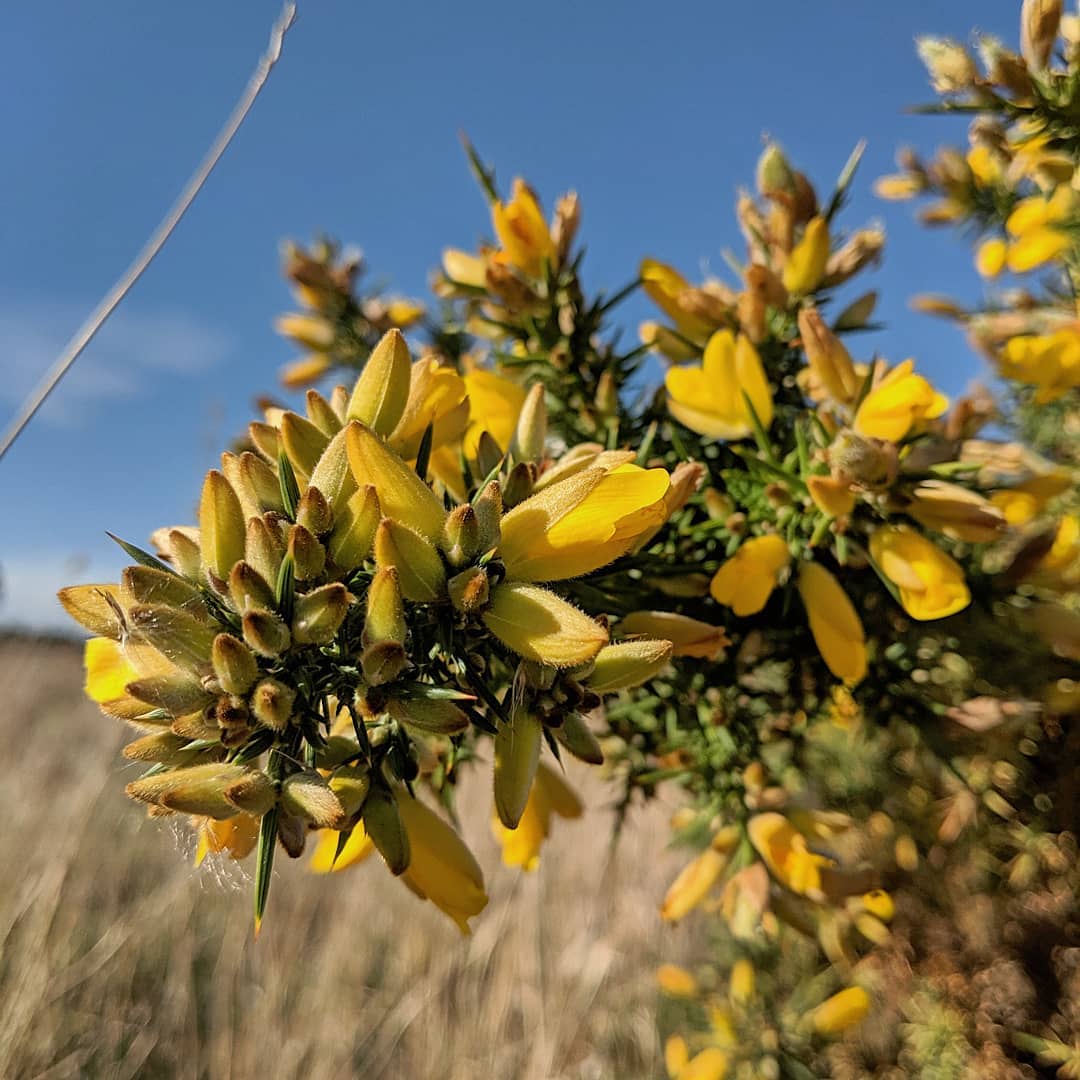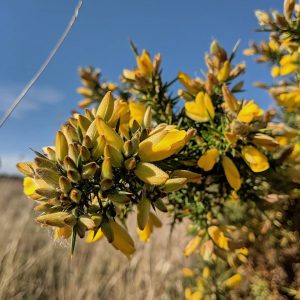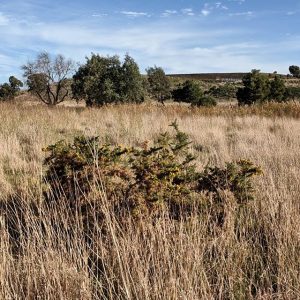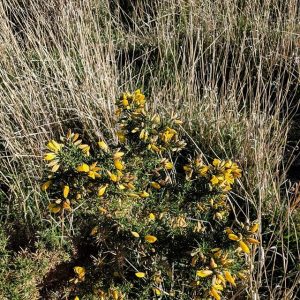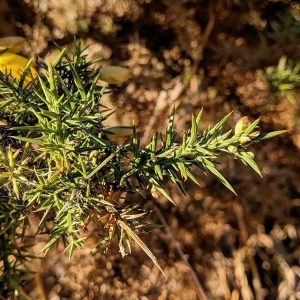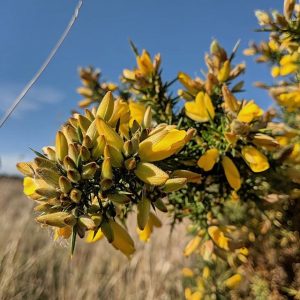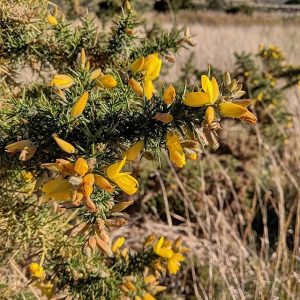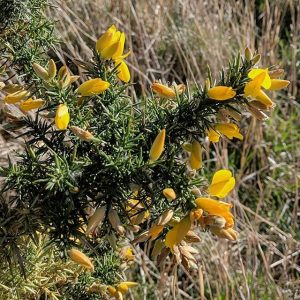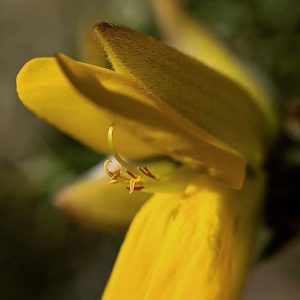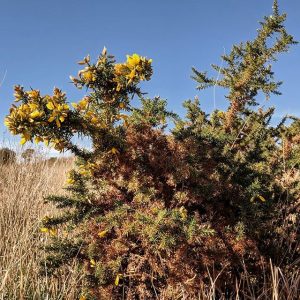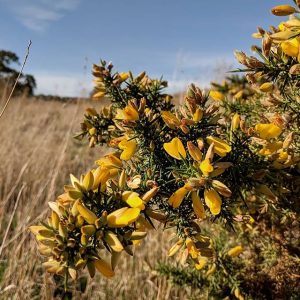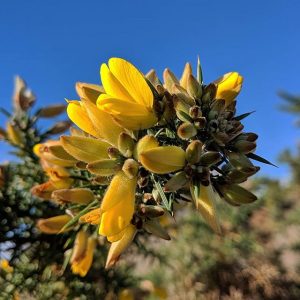Gorse (Ulex europaeus), brilliant with golden spangles, Western European nitrogen-fixer and destroyer of worlds.
Furnishing a fresh fodder for stock (palatable once milled of its prickles), a nasty living fence, and a permanent conversion of soils, Gorse was an early import to the Australian colonies. There are ads from 1834 in Hobart papers for the sale of Gorse seed at the Old Wharf. Hooker’s 1859 survey noted the plant had naturalised around Hobart, while an 1864 Launceston column decried the underuse of Gorse by the colony’s farmers, ‘even when acres of it are growing in the vicinity of their farms.’
Familiar in the UK, Gorse was promoted in colonial papers as a ‘cheap and nutritious food for cattle’ and a solution to acreage too steep or unsuitable for regular cultivation. A letter writer in the SMH (6/10/1855), promoting a forthcoming shipment of seed from England, asked ‘Would it not be desirable to sow seed of the above description on the barren [read overgrazed] hills around us, which no doubt would in the course of time prevent the sands from being carried and blown about so frequently?’
Early, Gorse served as a hedging substitute when hawthorn was not available in quantities; an 1852 farmers’ society meeting in the Adelaide Hills included comments on a Gorse fence that had been planted from seed in 1845. An 1858 account of a tour in Tas notes ’the splendid hawthorn and gorse hedges on Mr. Page’s farm give a very English look to it’.
Of Gorse, we could write pages. By 1882, the shine had started to come off: a review of fencing options in the Adelaide Observer called it ‘a mean-spreading plant, of which scarcely any good hedge can be made; it is open to the objection that it scatters seeds all over the country… while affording protection for rabbits, hares, &c.’ By 1888, Arthur Streeton had painted the golden cancer on grazing lands to Melbourne’s northeast. By the 1890s, accounts in Tas decried the neglect of high quality lands overgrown with Gorse, while Victoria debated its addition to the Thistle Act over farm societies’ objections.
View Original Post on Instagram
Search for information about Ulex europaeus in the Flora of Victoria
View information and occurrences of Ulex europaeus on the Atlas of Living Australia
